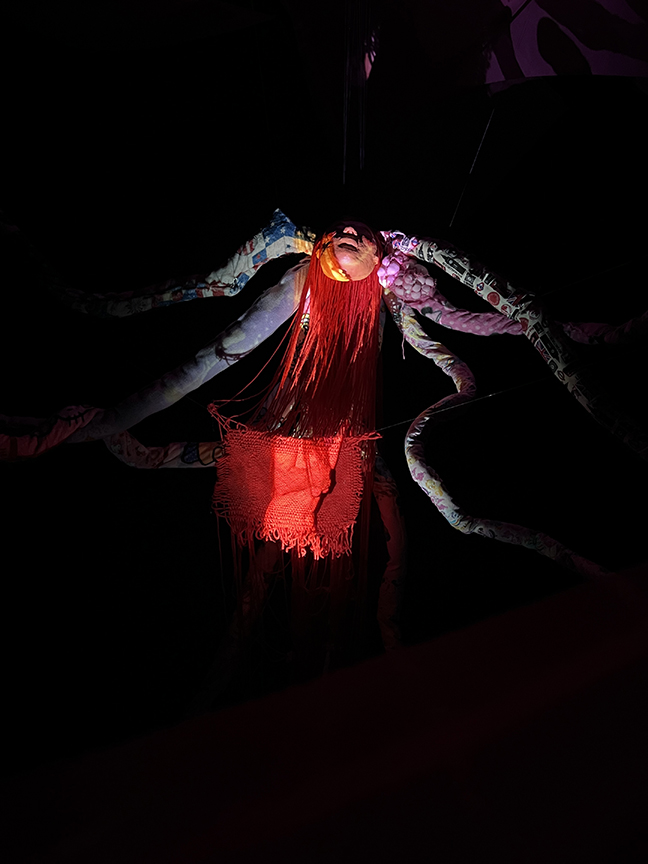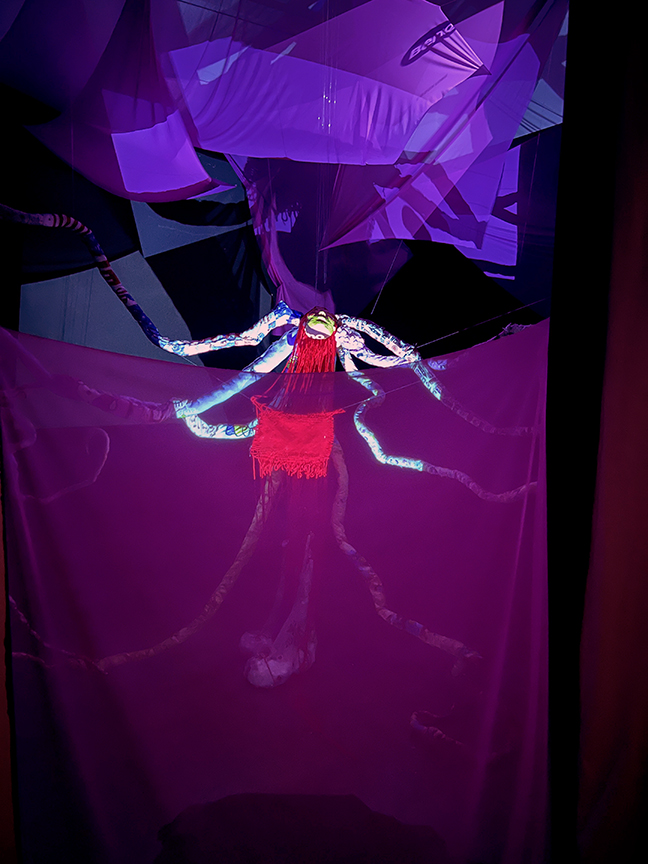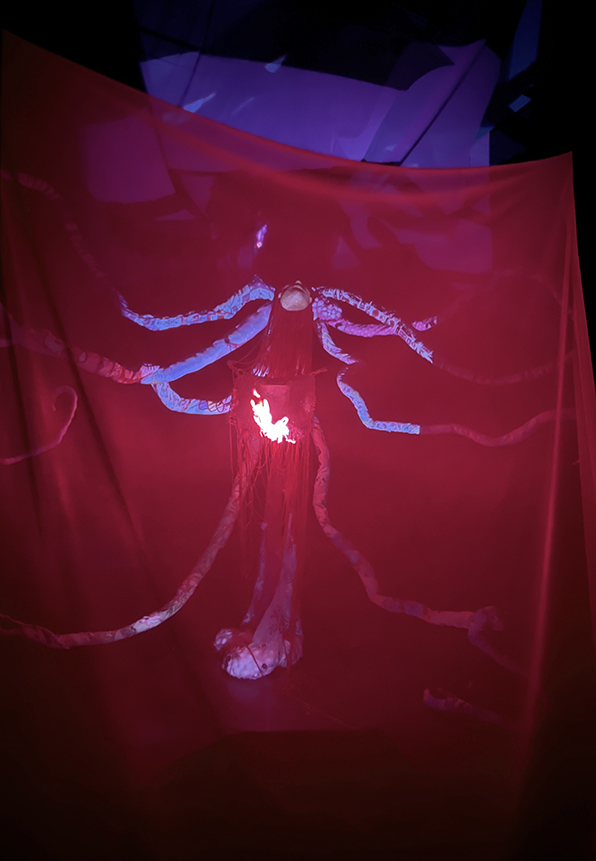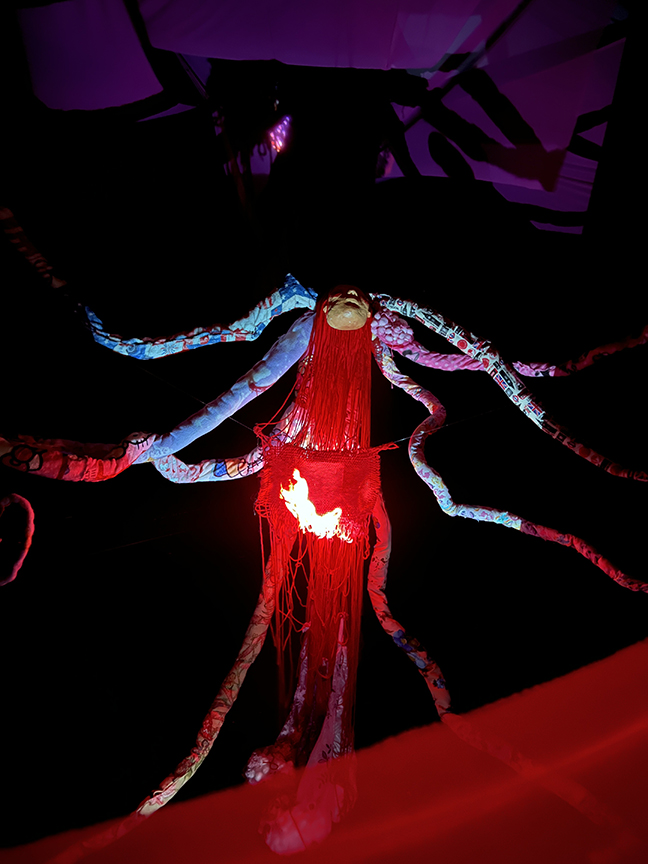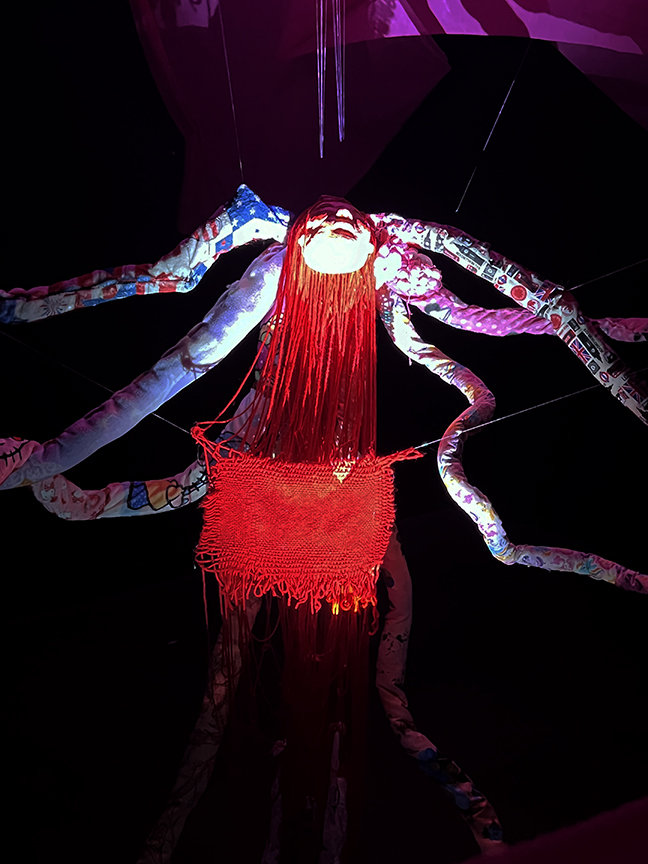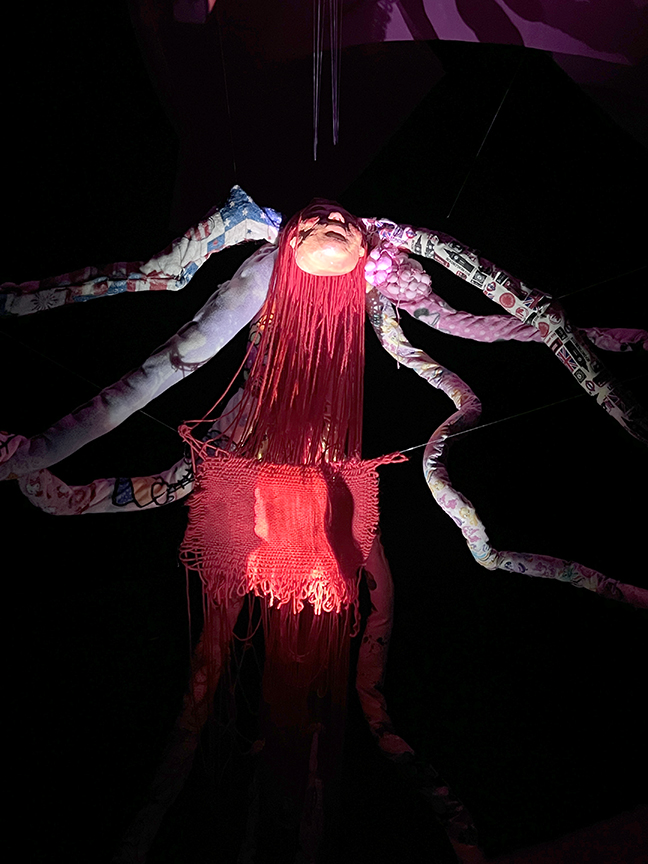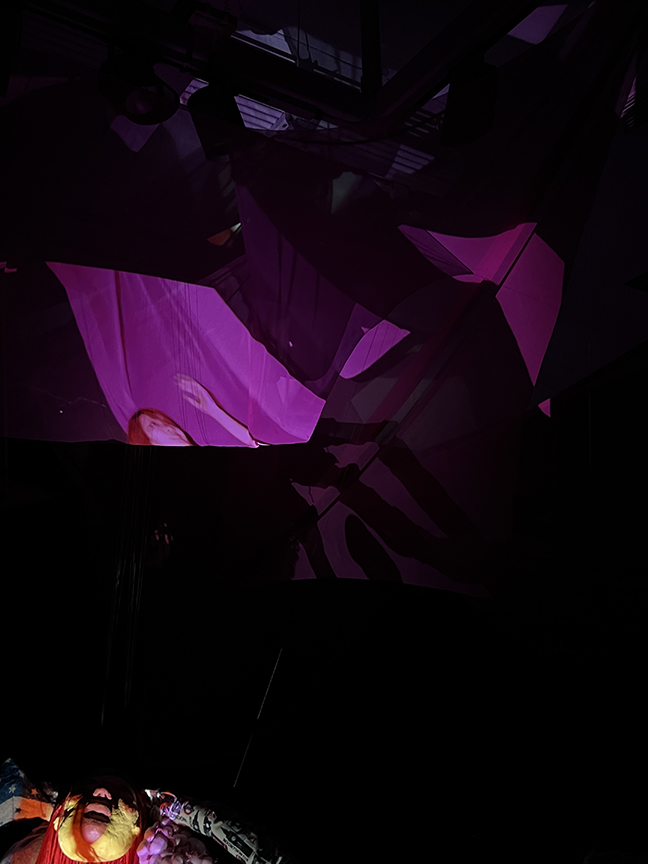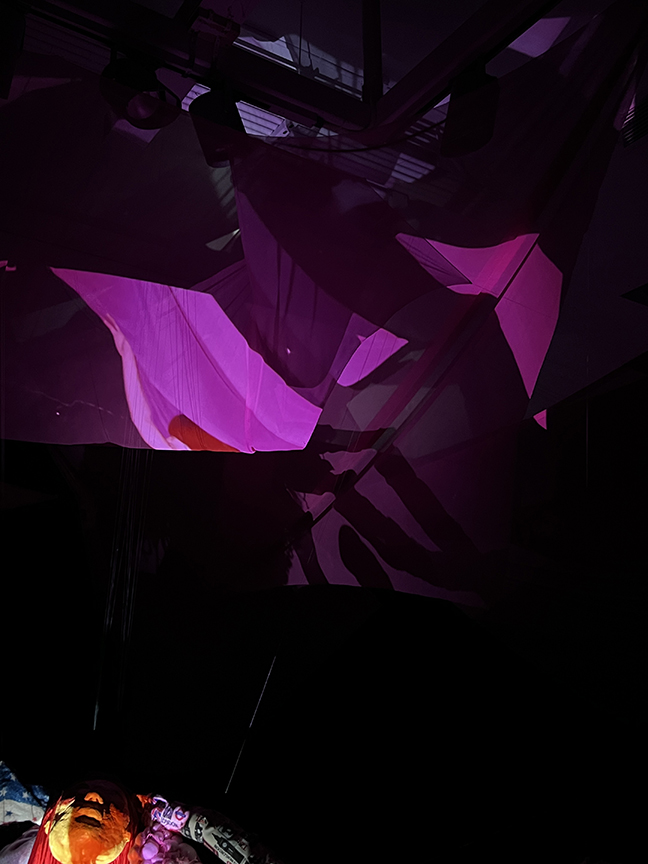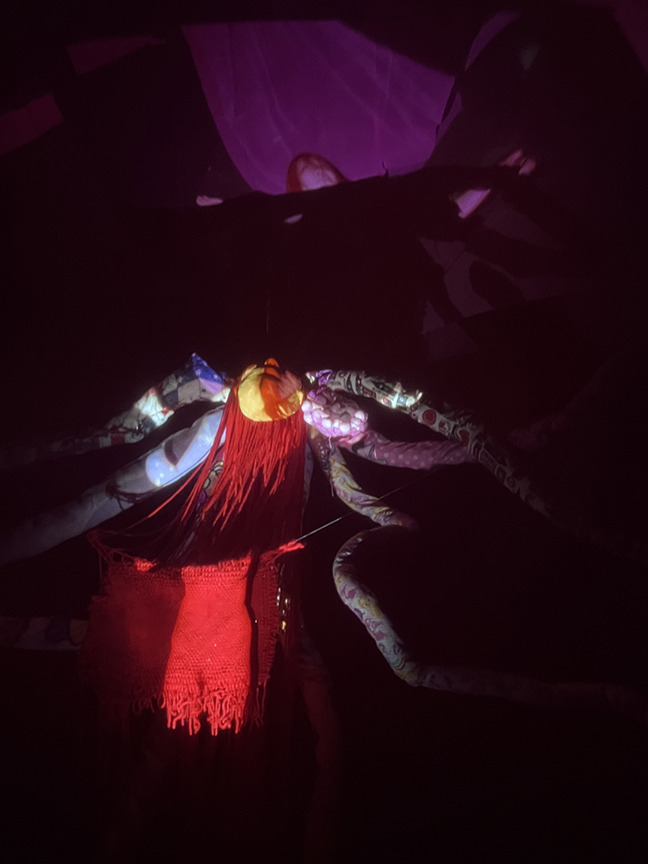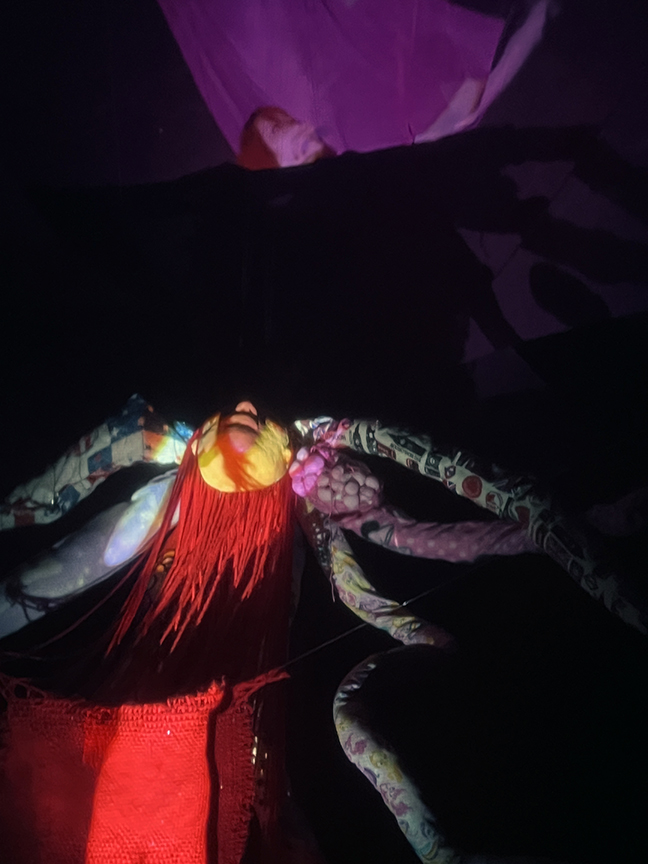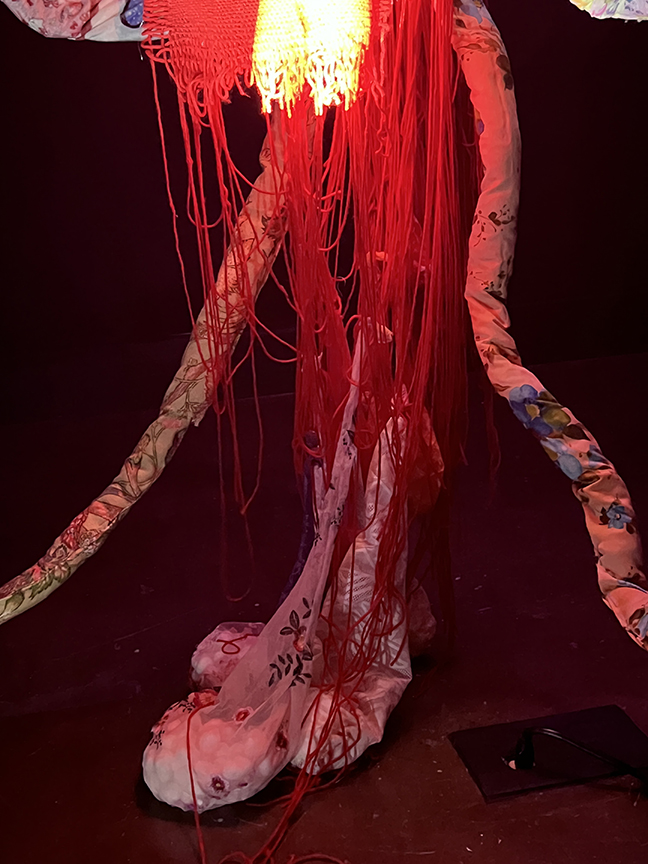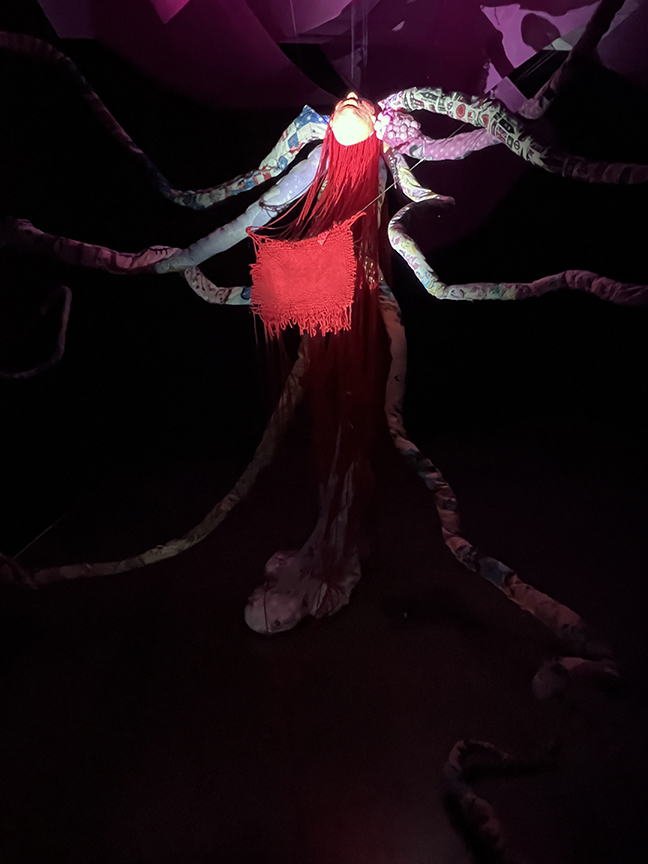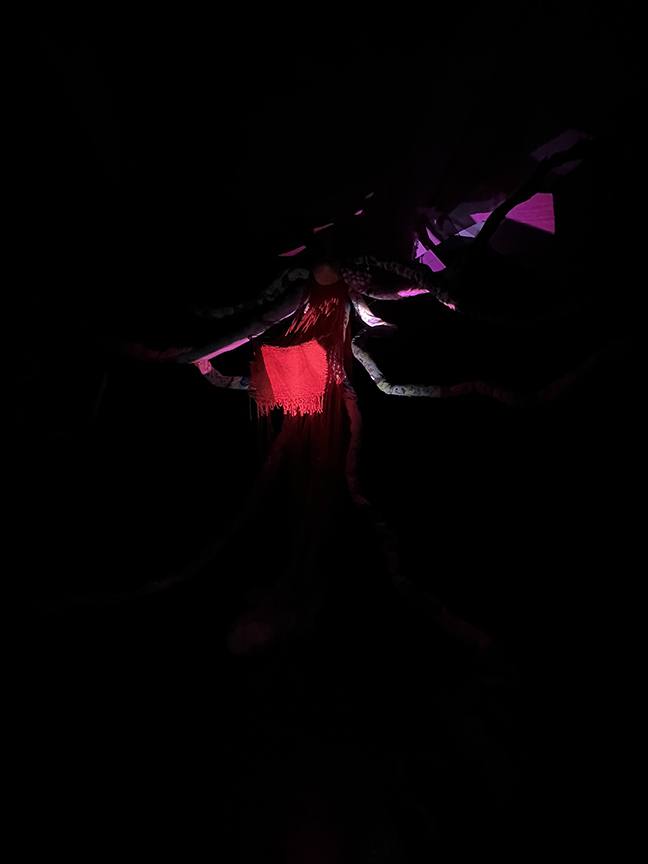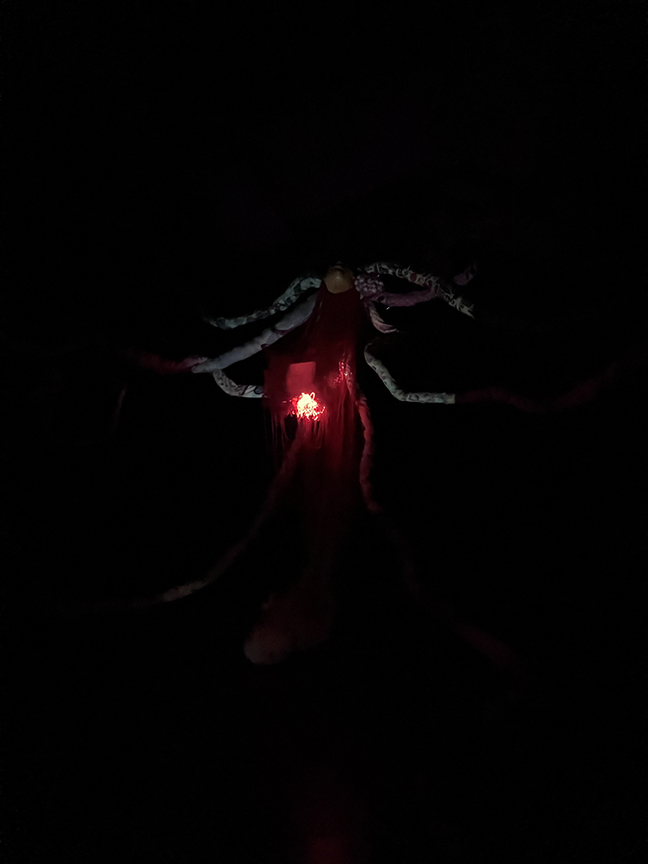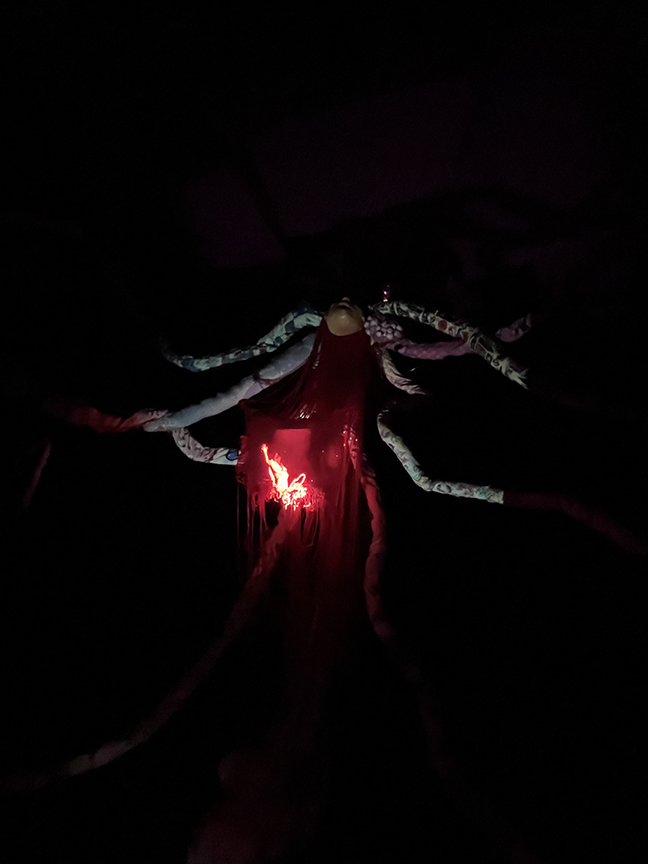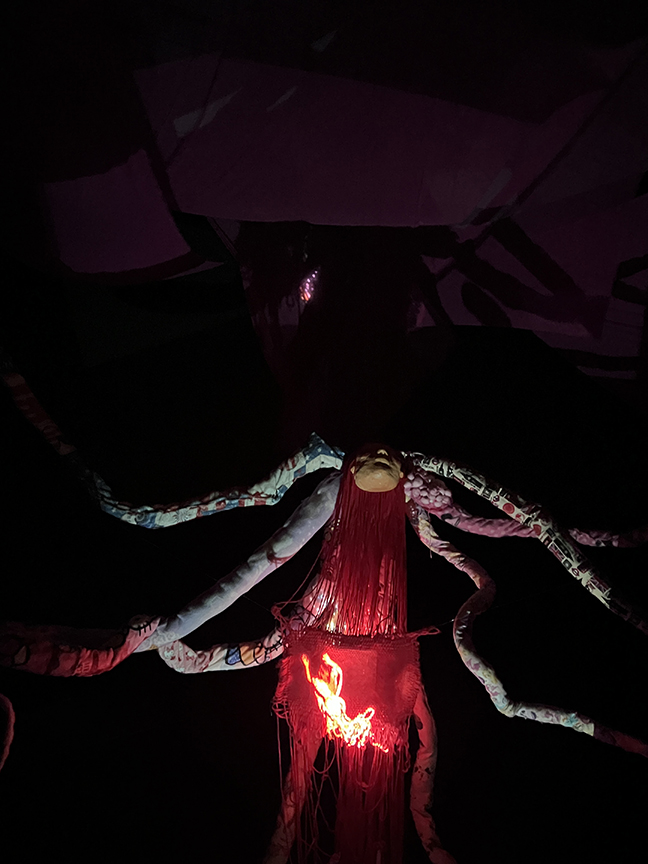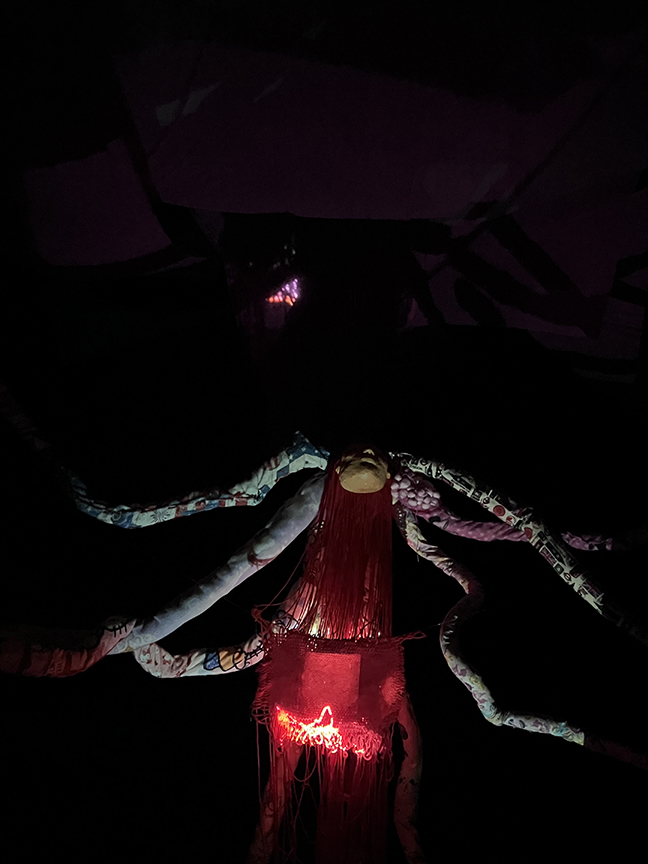奶奶,那我是啷个 (Grandma, Then Who Am I) – Kiko Gio
The 2024 recipient of the Margaret Stonewall Wooldridge Hamblet Merit Award
Statement
奶奶,那我是啷个 Grandma, Then Who Am intertwines personal reflection with the collective experiences of contemporary rural elderly Chinese women. Inspired by Louise Bourgeois’ Maman, the piece employ spiders as metaphors for my grandmother, symbolizing her dual role as a tailor in both her professional and personal life. As a woman form a low income family born in 1930’s China, she was born deprived of educational opportunity. She spends her whole life a small town, weaves for her husband and breeds her offspring. Meanwhile, I’m living on the other hemisphere of the globe, gradually overthrow motherhood, this piece highlights the unique nature of inter-generational relationships, characterized by pure care giving, devoid of educational and control intentions. It is exactly because of this pure support from grandmother stirs a feeling of guilt and embarrassment as my lifestyle has transitioned to the contrary of Chinese conventional one. This continuous struggle generated from seeking freedom and the deeply-rooted bond with y conventional family members.
Female nudity could be viewed as an empowerment on sexual liberation, but is more often considered as a symbol of sexualization. In the center of this piece is the spider selflessly weaving up a piece of fabric using her own hair, and sheltering her eggs with it. However, on the back and front of the spider, the image of me naked is at an angle unseen by her but visible to the audience. My continuous struggle on love and identity is not visible to her, because of the geographical distance also because of this generational gap, but she unconditionally continues to weave up cloth for me even if I choose to expose my nudity.
Bio
Born and raised in China and now residing in Nashville, Kiko Gio is a multimedia artist at Vanderbilt University, majoring in Studio Arts and Psychology, with an expected graduation date of spring 2024. Learning psychology and making art are both therapeutic to it. Kiko’s artistic journey is profoundly influenced by numerous geographical relocations, providing a dynamic and fluid perspective. The journey began with traditional Chinese art school training, emphasizing drill-based drawing practices, before veturing into fine art experiments in college. Unintentionally, Kiko’s work has gravitated towards exploring interpersonal and emotional relationships. Both materially and conceptually, Kiko persistently persues unconventional and avant-garde innovations, reflecting a deep commitment to pushing boundaries of artistic expression.

